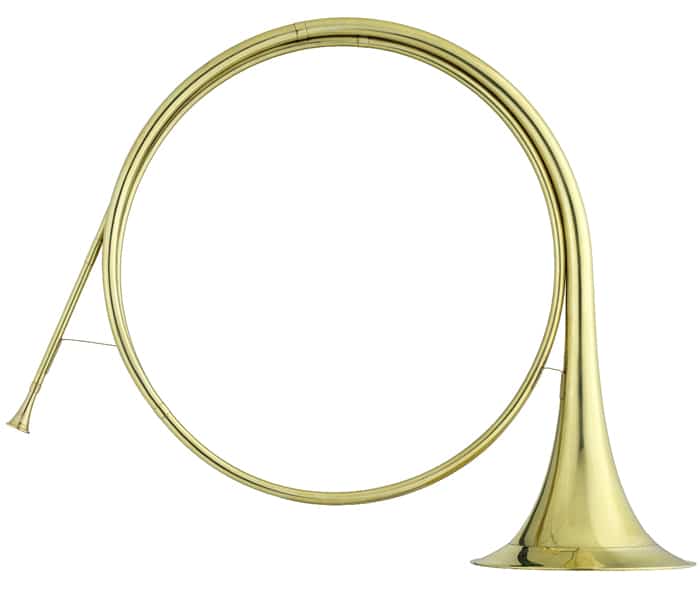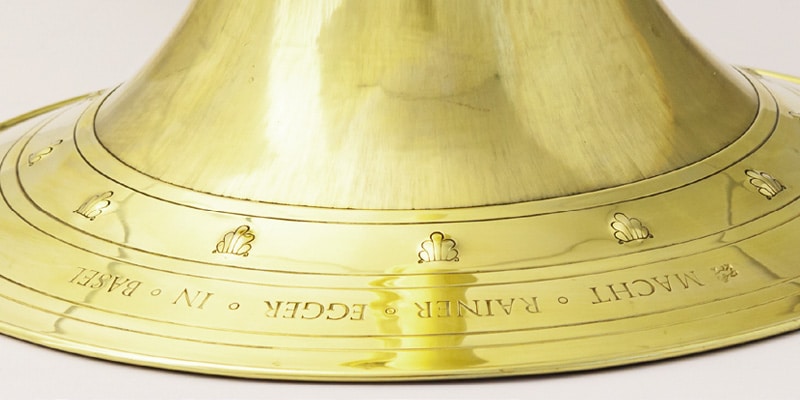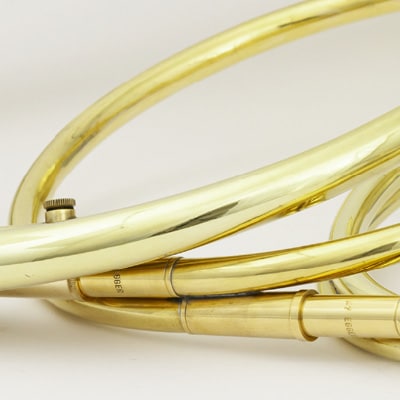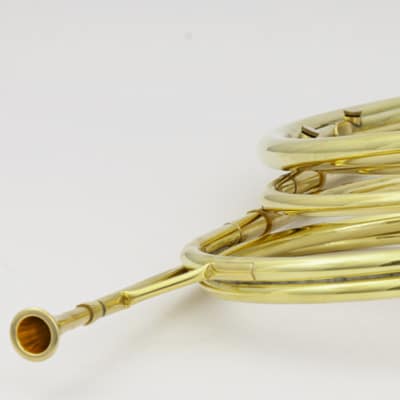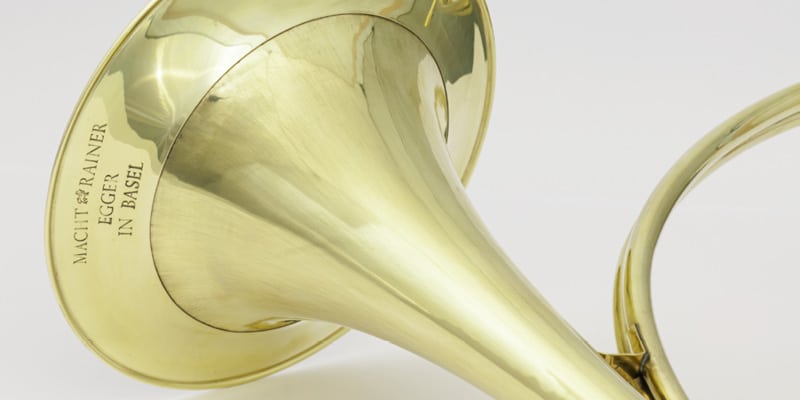Baroque horns
Baroque horn after Eichentopf
After Johann Heinrich Eichentopf, Leipzig 1738
The baroque horn after Eichentopf has a radiant, clear, baroque horn sound as well as a precise approach and excellent intonation. This makes it ideal for solo, ensemble and orchestra.
The horn is made with historical working techniques such as a hand-hammered cup and made of historical alloy to recreate the original sound, its character and its responsiveness as precisely as possible. All pipes are consistently made of sheet metal and soldered to become a pipe.
On request, it can be equipped with the 2-hole system for different keys, but can also be played with stopping technique as well as completely without holes. This enables a very versatile use. Due to its compact design, it is also very ergonomic and travel-friendly for a baroque horn and even suitable for hand luggage if transported in a case.
- Key of the body in 415 Hz. The body is supplied in the basic equipment with two tuning pins of your choice
- For all keys, the crooks of the Courtois Horn are required. With the crooks in 440 Hz, this horn plays in the corresponding keys in 415 Hz.
- Most common keys are G, F and D.
- Instrument in brass
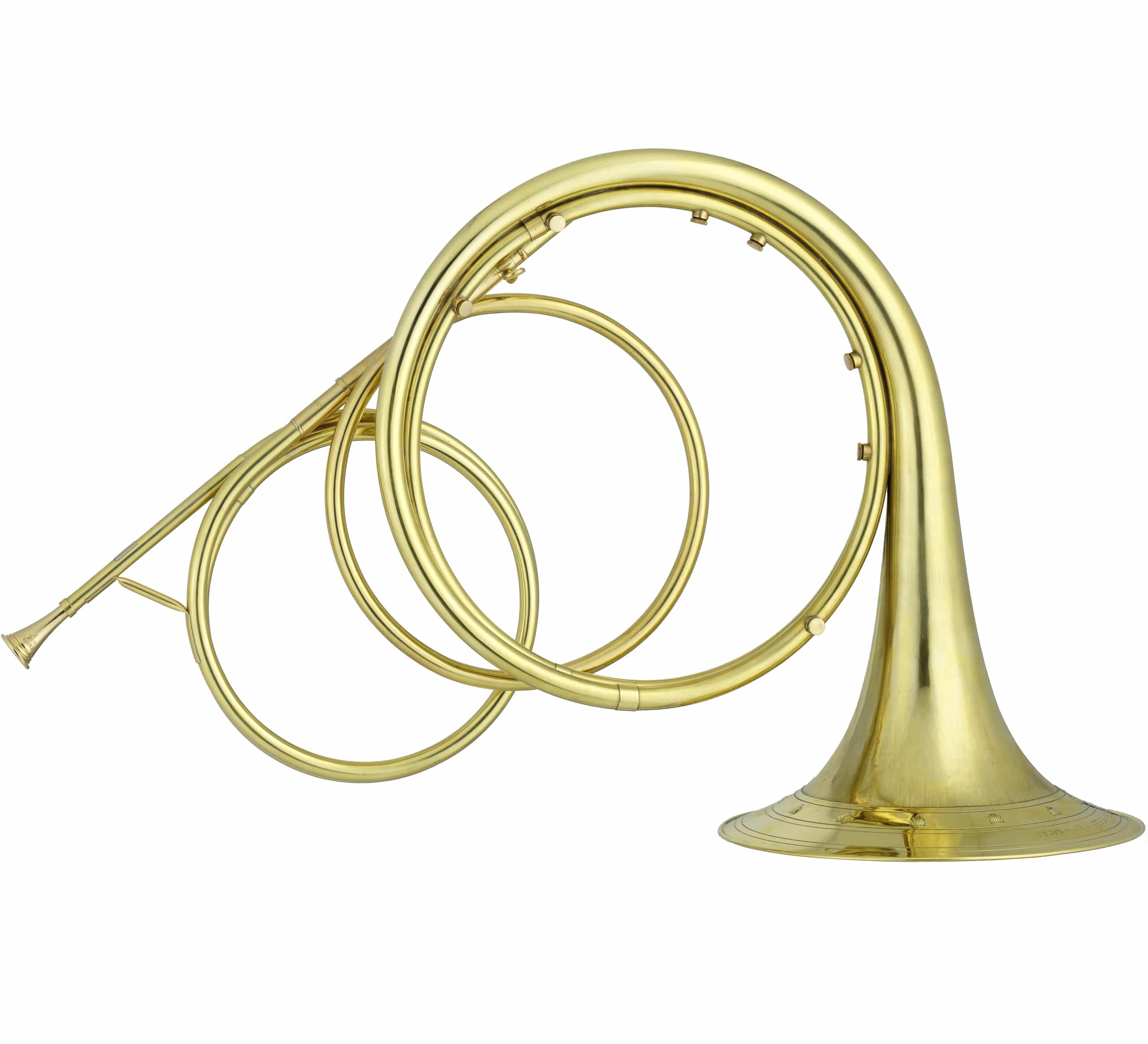
Baroque horn after Eichentopf in D 415 Hz tuning (F crook in combination with D Coupler). The body is equipped with ventholes in G, F, Eb and D.
Baroque horn after Leichamschneider
Among our most special instruments, we offer two true-to-original baroque horn replicas in one key respectively. One in the key of D after Michael Leichamschneider, the other one in the key of F after Johannes Leichamschneider.
In the case of original baroque horns, a continuously conical bore can be found from the mouthpiece to the bell. The bells are therefore of different size, depending on the length of the instrument. This greatly improves the bendability of the tones.
Due to the continuously conical bore, there is a better acoustic support for playing without hand stopping technique, which is why it can also be played well without this technique.
The replica of these two originals was initiated by and in collaboration with Martin Mürner, hornist and restorer for historical brass instruments.
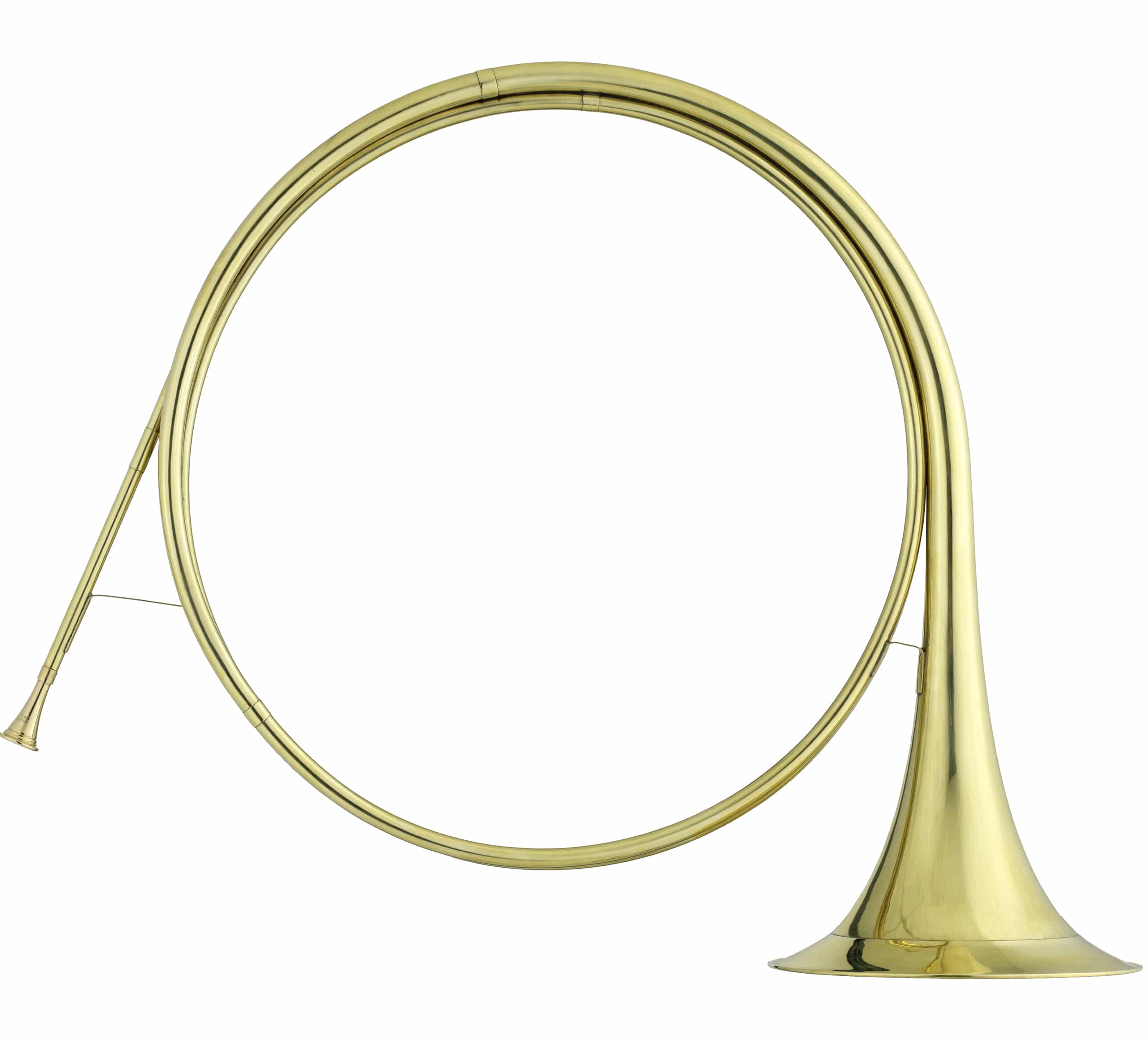
In the key of F 415 Hz
After Johannes Leichamschneider, Vienna, 1715
For our one-piece baroque horn in F we copied an original by Johannes Leichamschneider, Vienna 1715. The horn was made using historical handcrafting to get as close as possible to the original instrument. It is a rather narrow instrument with first-class intonation. This horn has a brilliant high register and a radiant tone combined with great agility.
This horn is ideal for an authentic style of Baroque music for F horn (such as the Brandenburg Concertos, the Christmas Oratorio, Haendel’s Giulio Cesare or Rameaus Les Borréades). It is therefore highly appreciated by players with authentic playing technique, as can be heard on the following recordings:
In the key of D 415 Hz
After Michael Leichamschneider, Vienna, 1723
Our one-piece baroque horn in D was copied from an original by Michael Leichamschneider, Vienna in 1723, which is now in the Bernese Historical Museum. We were able to play and measure the original in detail, and it was faithfully copied with historical handcrafting techniques to get as close as possible to the original instrument.
Due to its wide bell, this horn has a very characteristic, rich and warm sound. The large winding allows a very subtle articulation.
It is very suitable for the historical playing method (without hand stopping or ventholes), which is why it is the instrument of the first choice for an authentic approach in the baroque repertoire for horn in D, for example in Haendel’s fireworks music, water music, Bach’s B minor mass or Telemann concerts. On the following recording of J.S. Bach’s Quoniam from the Mass in B minor it can be heard.
The Leichamschneider horns on stage
These two great recordings show our baroque horns after Leichamschneider in use. Both recordings use the high art of historical playing technique. This means without the use of ventholes and without stopping technique, but with pure bending of the notes.
In J.S. Bach’s Quoniam from the Mass in B minor, the Baroque horn can be heard in D.
In J.M. Molter’s Divertimento you can hear two baroque horns in F.
Reiche horn with slide "Corno da tirarsi"
The question of “Corno da tirarsi” in the cantatas of J. S. Bach has occupied both musicians and musicologists for many years. Based on Olivier Picon’s research on this subject, we have seen the possibility of adapting our Reiche Horn (Tromba da caccia) to meet both the historical and musical requirements of these parts for Corno da tirarsi.
Our instrument has the characteristics that seem essential to us according to the historical information available to us: keys in Bb and A, double slide, conical leadpipe with narrow mouthpiece receiver, which is adapted to horn mouthpieces, and whose homogeneous and organic sound allows it to mix very well with voices.
The Corno da Tirarsi in the cantata BWV 109 “Ich glaube, lieber Herr, hilf meinem Unglauben”
In the opening movement, the Corno da Tirarsi plays a very complicated, chromatic line, partly colla parte with the first violin and oboe and partly solo. In the last movement (choral) it doubles the soprano line in the choir.
More recordings of Bach cantatas with Corno da Tirarsi
BWV 162 “Ach! Ich sehe, itzt, da ich zur Hochzeit gehe”
BWV 105 “Herr, gehe nicht ins Gericht mit deinem Knecht”
BWV 67 “Halt im Gedächtnis Jesum Christ”


